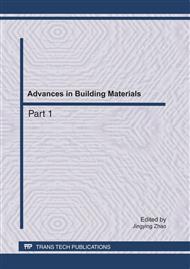p.1084
p.1089
p.1094
p.1099
p.1104
p.1109
p.1114
p.1119
p.1124
An Innovation Simulation Method for Flow State Evolution Laws of Water Inflow and Inrush in Course of Tunnel Excavation (Part II: Applications)
Abstract:
In order to avoid heavy casualties and economic losses, and to get an insight into flow state evolution laws of water inflow and inrush in course of tunnel excavation, simulations were done with COMSOL Multiphysics. By coupling and linking different kinds of sub domain governing equations with boundary conditions and possibly initial conditions, three kinds of water flow state, Darcy’s law for water flow in the limestone aquifer, Brinkman equations for fast fluid in the karst conduit; and incompressible Navier-Stokes equations for freely moving of water in the excavated tunnel, are interacted and coupled with each other. Water pressure and velocity were studied and analyzed in course of tunnel excavation. It is proved that there will be no disastrous water inrush when the seepage deformation of the karst conduit is small, and that it is of vital importance to protect and support the clastic medium of karst conduit, and to strictly guard against any change of the permeability of the karst fillings.
Info:
Periodical:
Pages:
1104-1108
Citation:
Online since:
May 2011
Authors:
Price:
Сopyright:
© 2011 Trans Tech Publications Ltd. All Rights Reserved
Share:
Citation:


